Microsoft's Xbox 360 goes 65nm: Falcon Dissection and Power Consumption
by Anand Lal Shimpi on November 15, 2007 11:55 PM EST- Posted in
- Smartphones
- Mobile
Identifying a 65nm Xbox 360
Not too long ago, a Xbox 360 owner posted about receiving a new console from Amazon.com with a pair of revised heatsinks on the CPU and GPU. The CPU heatsink in particular no long featured a heatpipe, something that had been present since the launch of the console, indicating that possibly the triple-core CPU had been manufactured on a cooler running 65nm process. The GPU heatsink remained unchanged from the first cooling update to the 360. Rough power numbers were eventually posted, showing a definite decrease in power consumption.
Insider sources referred to this new Xbox 360 by the codename Falcon, replacing the Zephyr Xbox 360 that launched with the Elite edition systems.
Eventually, thanks to the hard work of many Xbox forum members, a general system for determining whether a console used the new 65nm CPU was created. Thankfully, most of the indicators can be found on the outside of the Xbox 360 box without even opening it.
The first thing to look for is the Lot number, which is printed on a label on the side of the box. The first reported Falcon Xbox 360 was a Halo 3 Special Edition console, and for those consoles you needed to have a Lot number of 734 or greater (and a build date later than 8/24/07).


To check the manufacture date, flip up the serial number flap on the box and look up - the build date is listed above the serial number on the console itself, which is visible without opening the box.

The new Xbox 360 Premium consoles (the consoles with free copies of Forza 2 and Marvel Ultimate Alliance in the box) eventually started shipping with Falcon hardware, but these things needed to be in Lot 738 or greater. There are mixed results with lower lot numbers, but the newer the console, the greater your chances of getting a Falcon.
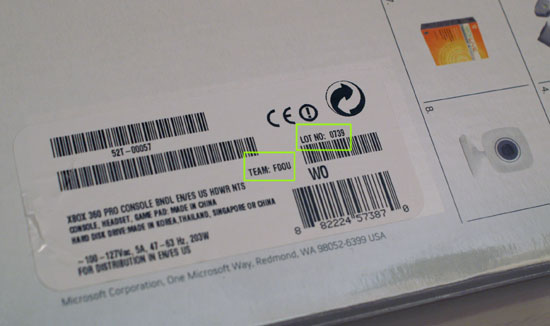
The next thing you'll want to confirm is the team, also located on the same sticker as the lot number. Team FDOU appears to be the most popularly associated with Falcons, at least in North America.
Once you get the Xbox 360 out of the packaging, there are two more tests to figure out whether or not you've got a falcon - both of which can be done without opening the Xbox itself. All you'll need here is a flashlight.
Stand the Xbox 360 on its side (hard drive side down) and shine the flashlight in through the holes in the grey plastic. What you're looking for is the side of the CPU heatsink. The older, non-falcon, Xbox 360s had a heatpipe running through the CPU's heatsink - if you see a copper heatpipe then you've got an older console. If, however, you see no copper heatpipe then you've got one with the new CPU heatsink, potentially a falcon.
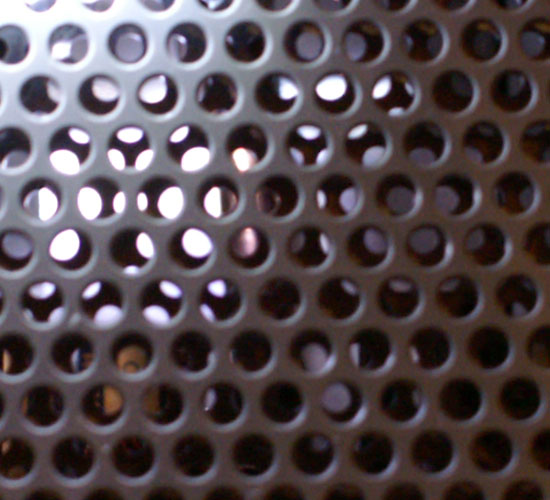
Click to See Full Image - See the reflection of the copper heatpipe? This is an older Xbox 360
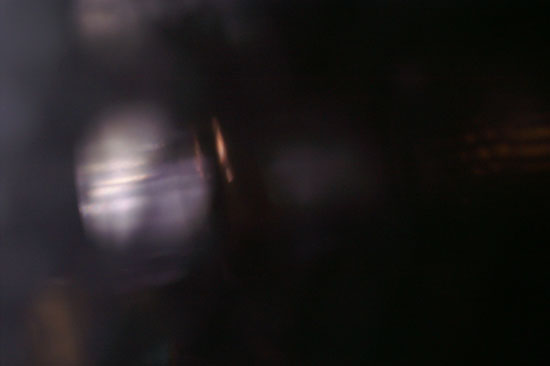
This blurry shot shows what you'll see when you look through those holes of an older Xbox 360
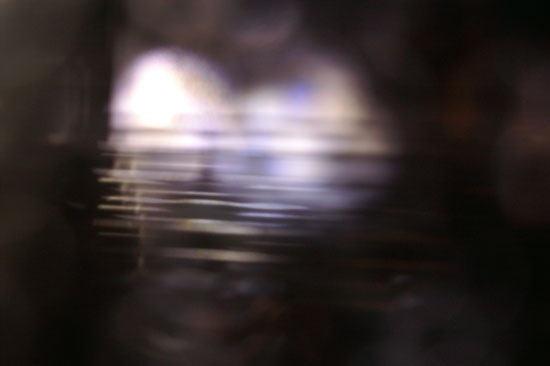
A new Xbox 360, what you're staring at is the CPU heatsink - note the lack of any copper heatpipe - 65nm here we come!
The final test is, once more, a flashlight test. This time, instead of looking for the copper heatpipe you're counting the number of inductors on the motherboard near the edge you're peering in. Three green inductors means you've got an older motherboard, two means you've got a new Falcon board.
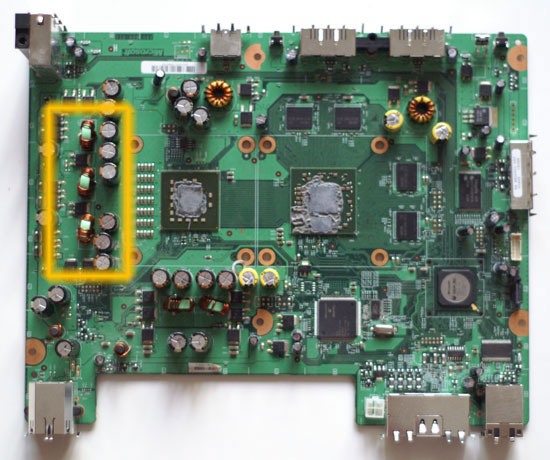
This is an original Xbox 360 motherboard, those three green inductors on the left are visible from the outside if you've got a good flash light and a keen eye
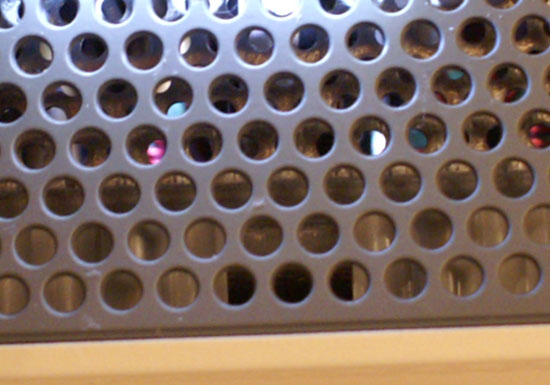
Click to see Full Image - On the left you can see the first inductor, on the right you can see the reflection of the second inductor on this original Xbox 360
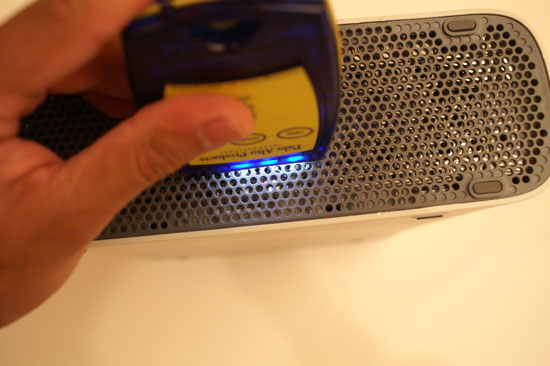
Click to see Full Image - Here's the location of the third inductor on a 90nm Xbox 360 console, the front of the console is on the left

A Falcon motherboard only has two inductors on the left










46 Comments
View All Comments
Staples - Saturday, November 17, 2007 - link
It is nice to see that much less power is being used in the Falcon. One test however is missing. The amount of power it uses when it is in power-savings download mode. This sure will not be enought to burn out the console however this measurement would be a lot more important to me than when it is in the off state.Mumrik - Friday, November 16, 2007 - link
The 360 has a baaad reputation for being noisy - does the Falcon still have this problem or has the noise been reduced significantly?I know it has been speculated that it might have to do with the DVD drive, so there might be no change.
strikeback03 - Friday, November 16, 2007 - link
Next to last paragraph, last page.
saiku - Friday, November 16, 2007 - link
Is there something that a non-soldering kind of guy do to cut down the noise? I have the HD-DVD addon and watching movies always includes a background noise score from the device itself.ChristopherO - Friday, November 16, 2007 - link
It depends on how much hassle you are willing to go through. The drive isn't "acoustically isolated", if it were suspended by rubber bands, it would be almost totally silent. The perceived drive noise is actually the resonance through the rest of the chassis.Microsoft could have fixed this problem by mouting the drive between soft rubber pads (held in place by friction).
You can experiment with acoustic isolation in your regular computer. If you suspend the hard disk with rubber bands in a 5 1/4" bay (instead of screwed into a 3.5" slot), even a loud drive like a WDC Raptor would be near silent during typically noisy seek operations.
My personal workstation and in-home server are totally silent. You don't realize how much noise comes off a typical computer (or game console) until you stand next to one that is totally noiseless.
BansheeX - Friday, November 16, 2007 - link
Rubber mounting the drive wouldn't make much of a difference. The real noise is coming from the internal mechanics of the drive. It's going to be loud at 12x no matter what you do.This is why blu-ray/HD-DVD can't be seen as only a capacity advantage for next-gen gaming. It's just as important for acoustics. The PS3 drive doesn't have to spin anywhere near as fast because the data is more densely packed on the disc. An analogy would be two fields with a horse on each. The 360 field has lines 5 yards apart and the PS3 field has lines 1 yard apart. The horse on the 360 field has to gallop (loudly) to cross lines at the same rate as the horse on the PS3 field trotting.
ChristopherO - Friday, November 16, 2007 - link
That's not true.It is an acoustic/mounting problem and has very little to do with revolutions per minute. The velocity of a 12x DVD drive is about 7,600-18K RPM. The only real difference between that and a 15K SCSI device is the litho/warping can create a balance issue (MSFT requires a total-surface graphic to prevent weight distribution problems). Furthermore, high speed drives will throttle down if experiencing vibration. Vibration corrupts the data long before it becomes an auditory annoyance.
Blu-Ray is a CLV device, and the BD ROM in the PS3 has a maximum velocity around 2,000 RPM. The vibration tolerances of the BD drive are less significant and as such employ fewer techniques to minimize noise. The noise delta is closer than one would guess based purely on surface speed.
That being said, the Xbox drive should always be louder than the PS3 drive in side-by-side comparisons, however if you were to hold the Xbox drive in your hands (while running) you would get a tremendous reduction in noise. Rubber mounting the drive would result in a tremendous perceived noise reduction, I'd guess 80% at the very least.
The sonic impact of virtually every drive (HDD, DVD, BD, HD DVD) is almost entirely related to hard-mounting rather than motor and vibration noise. Case in point, I have a Samsung 18X DVD drive (50% faster than the 360) in my PC and it is acoustically decoupled from the case. Even during high-speed reads it doesn't sound any louder than a 6x DVD drive using a traditional mount.
BansheeX - Friday, November 16, 2007 - link
While your tech-speak is mostly correct, I still question the ultimate assertion that the majority of noise is coming from case vibration and not the drive itself. Even if you rested the thing on bed of jello, the drive itself is emitting the bulk of the noise at a high spin speed. Not even close to 80% will be reduced. And I welcome you to post some objective test results to back up your claims, possibly a video with a direct audio comparison between a suspended dvd-rom and a non-suspended dvd-rom, of the same model, at the same speed. You would think that if you were right someone would have done this by now.That chirping noise that the dreamcast is famous for is not the sound of metal on metal vibration. It's the read head repositiong itself. The massive whooshing noise? It gets louder as the spin speed increases even with nothing to pass vibration to. Because inside the cd-rom itself is an assembly of metal and plastic parts that can't help but have more friction with each other when higher spin speeds force them to. Improving acoustics of something like this is difficult without also affecting durability. Only completely sealing the drive in foam or something is going to rid you of that noise, which is why you see hard drive enclosures as a far more popular an effective method for reducing drive noise than suspension (though you're limited in that most 3.5 drives will fry to death from the trapped heat). And that solution is obviously not very applicable for something which needs an opening.
If cheap rubber parts could have as pronounced an effect as you're claiming, I have to think that we wouldn't even be talking about this right now.
ChristopherO - Saturday, November 17, 2007 - link
I'm sure the Xbox crowd isn't too keen on modification since it voids a 36 month warranty. I've just got mine sitting on a piece of 1-inch thick foam, and that helps a decent bit. I'll modify mine once the warranty is up.
As for everything else (theory, etc) go to www.silentpcreview.com. Look in the forums on "drive suspensions", and similar. Some of the people there are wackier than me. When all is said and done my PC is below the ambient noise floor of my house. If I play a game (full load on the CPU/GPU), mute my speakers, I can easily hear the compressor in my fairly new (and quiet) fridge downstairs in the kitchen.
Suspension is much preferred to enclosures. The noise reduction is ultimately the same since virtually all drive noise is resonance and not a direct mechanical effect. If you're really concerned about drive heat you can stick memory heat sinks on the top of the drive, thus improving heat dissipation. The drive enclosure people are ripping consumers off since they get to sell you a flashy product for a lot more money than necessary (and many times are louder than suspension since they aren't properly decoupled).
The poor man's suspension is to use zip-ties. It isn't quite as effective as thick rubber, but close and it is easier to buy ties.
This message takes me 3 minutes to type. If you want to test it yourself, fire up your PC, pull your DVD ROM from its bay (but still attached), install something huge from DVD (a game, Office 2007, etc), hold the DVD ROM drive while installing and listen to the noise. It will be virtually eliminated.
You can even hold it inside the case (thus maintaining some amplification due to the enclosure) and the result will be virtually the same.
I'm not saying you'll end up with a totally silent drive, but the noise reduction will be appreciable. For instance a proper suspension will nearly silence a 15,000 RPM Cheetah during full seek. It is really striking. Like I said, the most audible component in my system is the 18X DVD and it sounds like a quiet 6 speed from the late 90s.
My PC is silent, be my guest if you don't believe me, but you can take 5 minutes and prove it to yourself. You don't need to go through the degree of insanity I've done, but a typical user can cut their PC's noise in half with 15-25 minutes of tinkering (drive suspension and buying something like Zalman fan controllers).
If you're really serious about silence, go for a thermistor controlled 120mm Nexus fan, a fanless PSU or exceptional PSU w/fan (Seasonic S12 is darn near silent), and a Scythe Ninja heat sink (can run passive on Core 2s). You can also get passive video cards or elaborate add-on cooling that is passive for all but the biggest cards.
BansheeX - Saturday, November 17, 2007 - link
Doesn't it look like I'm familiar with SilentPCReview.com in my post? I am very much into silent PCs. I can't stand noise coming from my case. I have a total of two fans in my case, one on the CPU and one in the power supply. The loudest part in my case is a very quiet fan on my SeaSonic PSU. My hard drive is newish Samsung 2.5 laptop drive that is naturally almost silent, even on seeks, but has been placed in a SilentDrive for literal silence. SilentPCReview forums are annoying because 2.5 drives are rarely ever mentioned even though, IMO, you would be an idiot to care about noise and not use one. Their thermal and acoustic properties are so much better than 3.5 drives, it's not even funny. And thanks to perpendicular density and cache increases, even a 5400rpm model performs better than my old 7200rpm 3.5 drive did.As for DVD-ROM drives, the best thing you can do to reduce noise is to cap the read speed with a program like Nero DriveSpeed. The guy who held out his drive and heard it was louder than when it was in his case is correct. You know why? Because when it was screwed tightly into the case, the drive was balanced and held in place by the strength and weight of the case, reducing wobble at high read speeds. So long as you have appropriate screws, there shouldn't be any extra noise outside of the drive. Suspending it in rubber could actually make it worse.